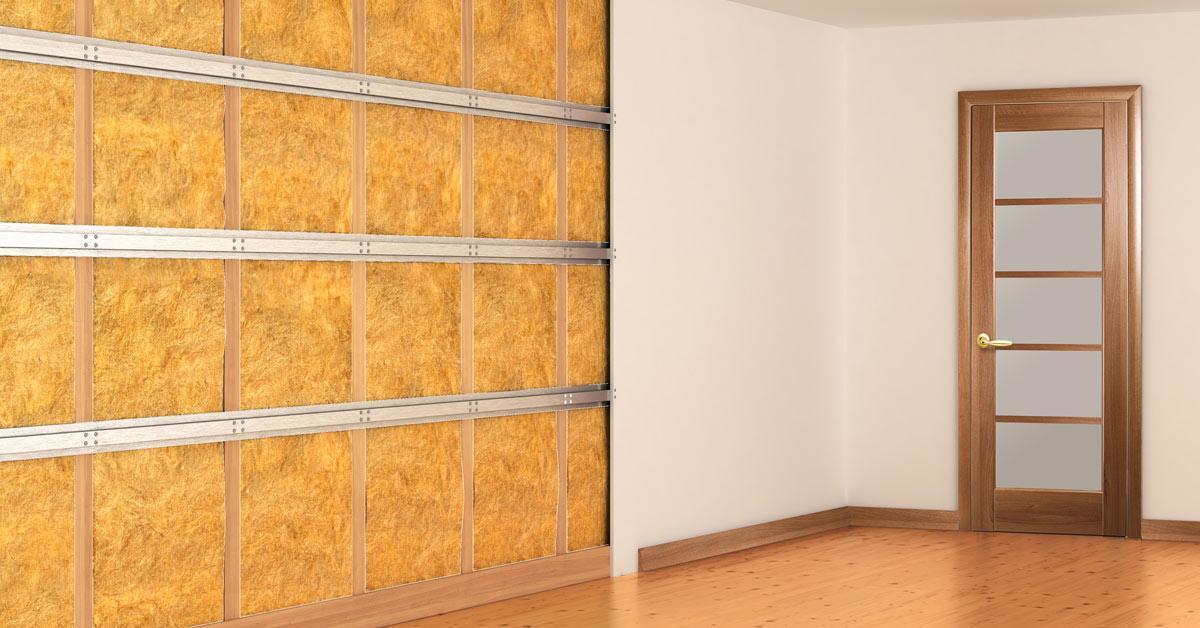
Whether you’re struggling to focus at work, are being disturbed in your sleep by noisy traffic or can hear your neighbours loud and clear, noise can have a huge impact on our lives. While we want a certain amount of noise in our work and home environments, the wrong noises can throw us off course and increase stress levels.
Thankfully there are plenty of effective ways to soundproof a home, studio or workspace. Check out our top 5 hacks for better inside acoustics.
1. Start with your foundation
If you haven’t yet built or are planning a major renovation, now’s the time to think about acoustics. Taking time to plan your building materials and layout design in an acoustic-friendly way can make a huge difference to the comfort of your space once it’s built.
For example, using double-brick walls will help block external noises from entering a home. Smart layout design such as keeping your living spaces away from the bedrooms will also reduce unwanted noise creeping in where it shouldn’t be.
Your choice of flooring can make a huge difference to noise levels too. Brick, cork and carpet floors tend to be the quietest options. Laminate and floating timber flooring are culprits when it comes to ‘walk’ noises. Preparing your subfloor is important to decrease the hollow sound of footsteps.
2. Use the hidden power of acoustic insulation batts
Thermal insulation in the walls, ceiling and floors of any building is essential for energy efficiency and temperature regulation. But insulation batts have another secret power: reducing noise transfer! Although traditional thermal insulation will help block noise somewhat, it’s worth investing in specialised acoustic insulation batts.
High density soundproofing insulation batts will help absorb sound and reduce transfer of noise from room to room. You can also install sound insulation batts between floors of multistorey homes and buildings to reduce the spread of upstair noises.
Most insulation brands such as Knauf Earthwool, CSR Bradford and Fletcher manufacture a line of acoustic insulation products which are designed to fit between wall studs or ceiling joists. If you are planning on installing thermal insulation it may be a worthwhile investment to upgrade to acoustic insulation.
3. Pay attention to your windows and doors
Sound is notorious for slipping through any little gaps or cracks. Check your windows and doors and be sure to seal up any gaps to prevent unwanted noises travelling through. Sealing gaps can usually be done as an easy DIY project with a good quality airtight sealant. Consider using a door sweep or draft stopper to block the gap under the door.
Traditional internal doors aren’t built for soundproofing. They tend to be hollow in the centre with thin skins. If it’s within budget, consider replacing your doors for thicker, acoustic-friendly doors.
Investing in double glazed glass windows and doors can also help prevent the spread of unwanted noises. Double glazing works by having a small layer of gas trapped between two layers of glass which dampens soundwaves and gives you a quieter indoor environment.
4. Consider internal acoustic solutions
If you aren’t willing to open up your wall cavities and install acoustic insulation, try acoustic panels or boards. These are usually simple to install on the walls or ceilings of existing buildings. Made from highly absorbent materials, they are a great solution for homes and commercial spaces.
There are many different types of internal acoustic products available. For example, the brand Autex makes decorative wall linings which can be installed like wall paper to help absorb sound and improve the acoustic quality inside a room. They also manufacture 3D tiles which can be installed strategically around a space to control noise levels.
Acoustic baffles are an effective solution for wide open office spaces. These can be hung from the ceiling or fixed in place to absorb noises and reduce background echo. Open offices may also benefit from hanging screens or acoustic partitions which break up the space and improve acoustic quality.
5. Decorate with sound in mind
As sound waves hit a surface, they can either be reflected back into the room or absorbed by the surface. Many modern homes and office spaces are built with lots of hard surfaces which can create a ‘tinny’ effect as sounds bounce around the room.
Believe it or not, your decor choices can affect the acoustic environment. By selecting materials that are better at absorbing sound, you can reduce the echo effect and improve sound quality.
Here are some DIY decor ideas that will help you soundproof a room:
- Install thick carpet or invest in large rugs – these will absorb sound much better than wood, vinyl or concrete flooring
- Choose softer furnishings over hard ones
- Hang heavy curtains – metal blinds and wood shutters won’t absorb sound nearly as well as thick curtains can
- Display fabric wall hangings to break up the hard surfaces of walls.
Whether you’re planning to get professional help or try out some of our DIY tips, we hope you’ve got some ideas about how to get started soundproofing your space.
